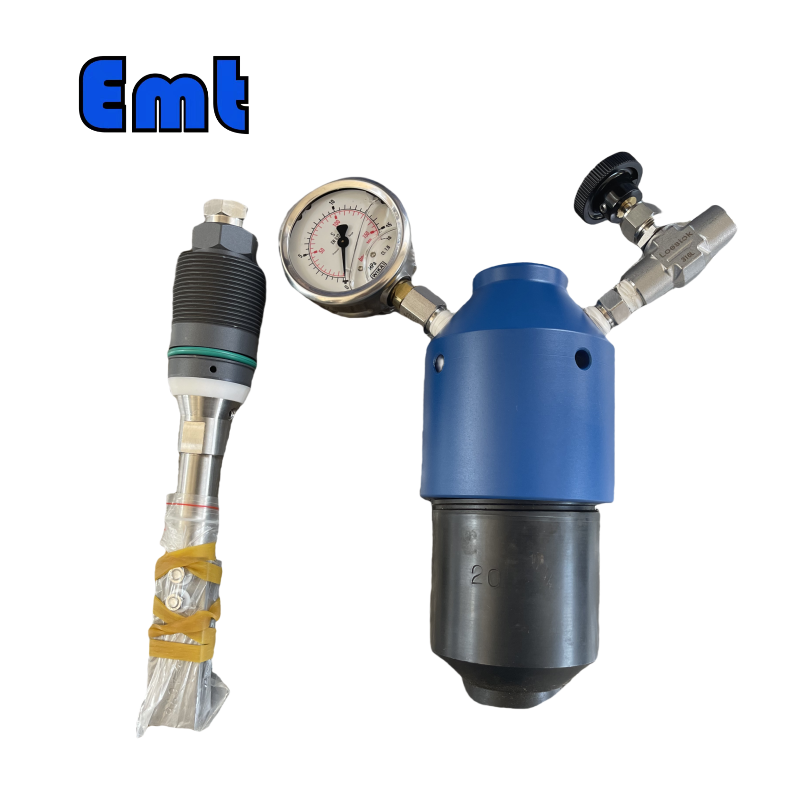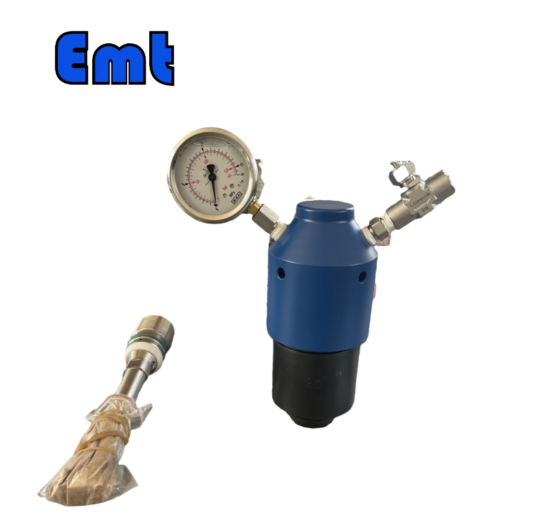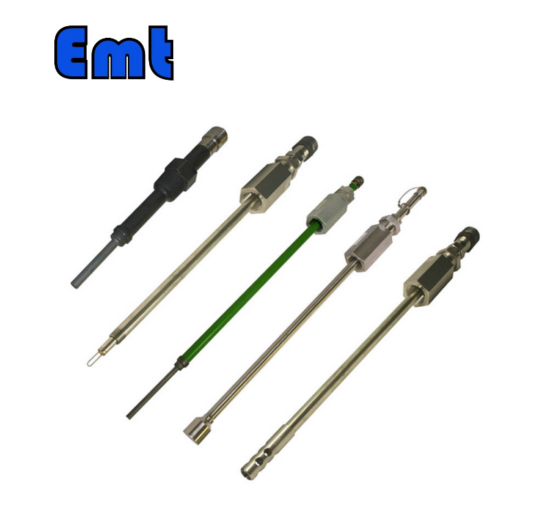I. مقدمه
Definition and Role of Metal Corrosion Coupons
Metal Corrosion Coupons are small, standardized test pieces of metal that are used extensively in industrial systems to simulate the corrosion behavior of larger installations. These coupons mimic the chemical composition and mechanical properties of the materials used in critical infrastructure, providing a direct and effective means to study corrosion processes under real-world conditions.
اهمیت نظارت بر خوردگی
Monitoring corrosion is crucial for maintaining the structural integrity and operational reliability of industrial systems. By utilizing corrosion coupons, industries can proactively manage the degradation of materials, extend the lifespan of their equipment, and ensure the safety of their operations. This strategic approach not only helps in preventing unexpected failures. But also significantly reduces maintenance costs and downtime.
نام | کوپن های خوردگی فلزی | |
| مواد | فولاد ضد زنگ 304، فولاد ضد زنگ 316، DSS F51، فولاد کربن A105N، اینکونل 625 | |
| دمای عملیاتی | -20±120 | |
| ویژگی | Firstly, easy to Operating | |
| ثانیا، عمر طولانی با دقت بالا | ||
| در نهایت، راندمان بالا، هزینه کم | ||
| پرداخت | TT/LC | |
| مزیت - فایده - سود - منفعت | اولا، آنها سبک و انعطاف پذیر هستند. | |
| Secondly, nice Injection efficiency. | ||
| در نهایت، ردیابی دقیق مکان. |
II. Functionality and Setup of Corrosion Coupons
Usage in Monitoring Containers and On-Site Systems
Corrosion coupons are strategically placed in key areas within monitoring containers or directly within on-site systems. Such as pipelines and heat exchangers. Then this placement allows them to experience the same environmental conditions as the system they are monitoring, providing insights into the corrosion dynamics at play.
Process of Monitoring
So the methodology involves several critical steps:
- Pre-treatment: Corrosion coupons are prepared and conditioned to ensure consistent and accurate results.
- Weighing: Each coupon is meticulously weighed before placement to establish a baseline for later comparison.
- Exposure: The coupons are exposed to the operational environment for a predetermined period, typically ranging from 30 to 90 days, to undergo corrosion.
- Re-weighing: Upon retrieval, the coupons are cleaned of any corrosion products and re-weighed. So the weight loss indicates the extent of corrosion. Which is then used to calculate the corrosion rate.
III. Types of Corrosion Detected
Comprehensive Overview of Corrosion Types
Corrosion coupons are instrumental in identifying and quantifying various types of corrosion, each affecting industrial materials in distinct ways:
- Galvanic Corrosion: This occurs when two dissimilar metals are in electrical contact in a corrosive environment, leading to accelerated corrosion of the anodic metal.
- Crevice Corrosion: Often found in metal joints or where debris accumulates, crevice corrosion is localized corrosion resulting from differential aeration in confined spaces.
- Pitting Corrosion: Characterized by small, localized holes on the metal surface, pitting is a form of extremely localized corrosion that leads to the creation of cavities, which can severely compromise the mechanical integrity of metals.
- Intergranular Corrosion: This type of corrosion attacks the grain boundaries of alloys, often progressing without significant surface evidence, making it particularly insidious.
- Delamination Corrosion (Selective Etching): In this scenario, selective layers of metal are corroded. Which can weaken the structural integrity of the material.
- Stress Corrosion: A dangerous combination of tensile stress and corrosive environment, stress corrosion can lead to sudden and catastrophic failures, particularly in high-stress components like pipelines and support beams.
- Effects of Trace Elements: Trace elements, such as chlorides and sulfides, can significantly accelerate specific types of corrosion. Understanding their impact is crucial for selecting appropriate materials and protective measures.
IV. Material and Features of Corrosion Coupons
List of Materials Commonly Used for Corrosion Coupons
Corrosion coupons are manufactured from a variety of materials, each selected to closely replicate the operational conditions and challenges specific to different industrial settings:
- Stainless Steel 304 and 316: These are widely used for their excellent corrosion resistance and durability, suitable for a broad range of environments.
- Duplex Stainless Steel F51: Known for its high strength and resistance to stress corrosion cracking, also making it ideal for harsher conditions.
- Carbon Steel A105N: Commonly used in oil and gas industries due to its good machinability and high tensile strength.
- Inconel 625: An alloy noted for its outstanding resistance to extreme environments, including high temperature and corrosive conditions, particularly in marine and aerospace industries.
Key Features of Corrosion Coupons
Corrosion coupons offer several features that make them indispensable tools in corrosion monitoring:
- Temperature Range: They can operate in a wide temperature spectrum from -20°C to +120°C, accommodating everything from cryogenic conditions to high-temperature processes.
- Lightweight and Flexible Design: This makes them easy to install in complex industrial systems where space and accessibility can be challenging.
- High Accuracy and Efficiency: Corrosion coupons provide precise measurements of corrosion rates, aiding in the effective assessment and management of material integrity.
- Cost-effectiveness: They are an economical solution for ongoing corrosion monitoring, providing significant data without a large investment.
V. Handling and Precautions
Proper Handling and Documentation Procedures
To ensure the reliability of the data obtained from corrosion coupons, strict handling and documentation procedures must be followed:
- Handling: Coupons should be handled with gloves to prevent oils from the skin from affecting the results. Then they must be installed and retrieved using appropriate tools and techniques to avoid any damage.
- Documentation: Detailed records of each coupon’s life cycle—from installation to retrieval, including exposure duration and environmental conditions—are crucial for accurate analysis and traceability.
Recommendations for Storing Unused Coupons
To prevent contamination and premature corrosion, unused corrosion coupons should be stored properly:
- محیط: Store in a clean, dry place away from potential contaminants.
- بسته بندی: Keep in original, sealed packaging to reduce exposure to environmental factors until they are ready for use.
VI. Corrosion Protection Technology for Oil and Gas Pipelines
Description of Advanced Techniques
In the oil and gas industry, several advanced corrosion protection technologies are also employed to safeguard pipelines from internal corrosion:
- Corrosion Inhibitor Technology: Involves the addition of chemicals to the fluid stream to reduce its corrosivity on the pipeline walls.
- Inner Coating Technology: Application of protective coatings inside pipelines to prevent direct contact between the pipe material and corrosive fluids.
- Composite Pipe Technology: Uses layers of different materials, including ceramics, to enhance the structural strength and corrosion resistance of pipelines.
هفتم. نتیجه گیری
Importance and Benefits
The use of Metal Corrosion Coupons, coupled with advanced corrosion protection technologies. It plays a critical role in maintaining the integrity and safety of industrial systems. These tools and techniques not only extend the operational life of vital infrastructure. But it also significantly enhance safety standards, reducing the risk of unexpected failures and associated costs. Thus, they are indispensable in the strategic management of corrosion in any industrial setting.






هنوز هیچ بررسی وجود ندارد.